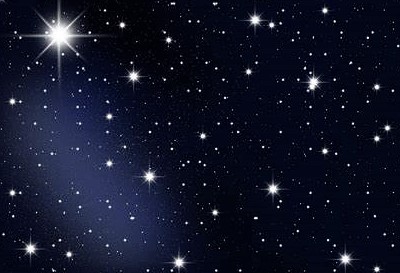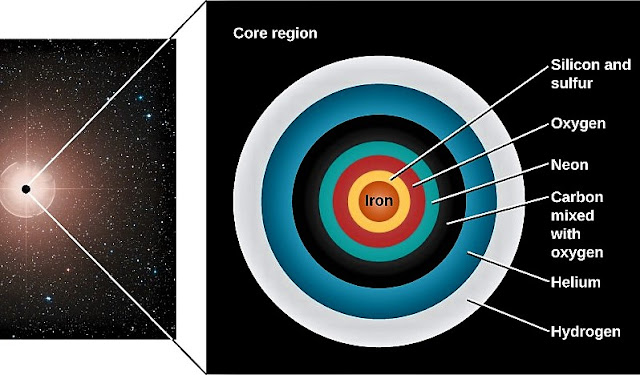Stars facts and Information | About Stars | Stars Structure
About Stars Structure, Stars in Space, Stars are made up of, Stars Facts and Information, How many stars are There and What are Stars Made of ?
Stars Information
A star is a huge, bright, sphere of very hot gas called plasma that is held together by its own gravity.
Stars propagate the energy created by nuclear fusion, a process that takes place at the core of the star and involves hydrogen fusing (burning) to form helium.
As the star nears the end of its life, it begins to convert helium into heavy chemicals
Elements, such as carbon and oxygen, and the star will begin to change color, density, mass
And size.
The closest star to Earth is the Sun, which is classified as the G2 yellow dwarf star.
After the Sun in our solar system, the closest star to Earth is Proxima Centauri. It is about 39.9 trillion km away or 4.2 light years.
About Stars
Many of the star you see in the night sky look like a single, distant glitter of light. Not so though. Most of the star you see in the night sky are actually two Star systems, or binary star systems. They are so far away that they appear only as a particle of light.
Before a giant star enters the white dwarf phase, it undergoes an incredible chain reaction in which it burns at a dramatic speed through the rest of its fuel and explodes due to the speed of the reaction. This reaction is known as a supernova.
If a star is large enough, it could turn into a really large, gravitational, and light-eating black hole once it goes supernovae.
If you have enough mass, it will burn like a white dwarf. Although it will go into a state of decay instead of disappearing, these star are rare and are called neutron star.
There are some star that are 100 times bigger than our Sun. These stars can also produce about a million times more output radius than our Sun, while maintaining the same radius.
The closest observable star is the sol, or more commonly known as the sun. Even though it is about 150 kilometers away, there are billions of stars in our Milky Way galaxy.
A galaxy is a galaxy inside our solar system. When the sky is dark and clear the galaxy looks like a bright strip of star. It is estimated to be 13.2 billion years old.
How many Stars are There
The Milky Way galaxy has an estimated 100-400 billion stars, but this number is constantly changing as new stars are born and old star die. There are no pictures showing the full scope of the galaxy.
Since the earth is sitting inside the galaxy we have to leave our own solar system to get a picture of the whole thing. (Reference) The average star is 1 to 10 billion years old, although some stars are even older.
Larger stars have a shorter lifespan than smaller stars, as larger stars burn faster through their fuel. Bright supernovae explode when giant star die.
The most common type of star is the red dwarf. These star are less than half the mass and size of the Sun. Red dwarfs burn very slowly, with a lifespan of over 100 billion years.
These stars shine less than others because they are cold, and fade until they disappear. Unlike giant star such as supergiant and hypergiants, tiny red dwarf star do not explode. Interestingly, our sun is a red dwarf star.
Most of the star you see in the night sky are bigger and brighter than the sun. The 50 most famous stars you can see in the sky from Earth are much brighter and larger than the Sun.
Stars are made up of
Alpha Centauri is the most obscure of all 50, still 1.5 times brighter than the Sun.
All the star appear the same color when you look at the night sky with your naked eye, but in reality it is not. Stars have different colors depending on their temperature. The hottest star are blue, followed by white, yellow, orange, and red The coolest stars are brown.
Our sun is a ‘green star’, or rather a green-blue star, because its actual color is border by these two colors. Once impressed by the atmosphere around it, the sun appears white or yellow to us when we look at the planet Earth.
It takes millions of years for starlight to reach our eyes, meaning you have been looking at star for a long time. Looking at the night sky is like looking back 100,000 years.
Stars Structure
The most common star is the red dwarf. They are less than half the size and shape of our sun, and their fuel burns very slowly so they live 100 billion years longer than any other type of star.
Very heavy star that have gone supernovae can actually turn into black holes.- Depending on how hot they are, the star are in a range of colors, in the order of lowest to highest temperatures they can be brown, red, orange, yellow, white or blue. Color.
It takes millions of years for light from the stars to reach the earth, so when you look
Tara you are literally looking back in time.
The stars don’t really shine. They only appear to be blinking due to the turbulence in the Earth’s atmosphere which blocks the light reaching our eyes.
Extremely heavy star that have gone into supernovae could actually turn into black holes.









No comments: